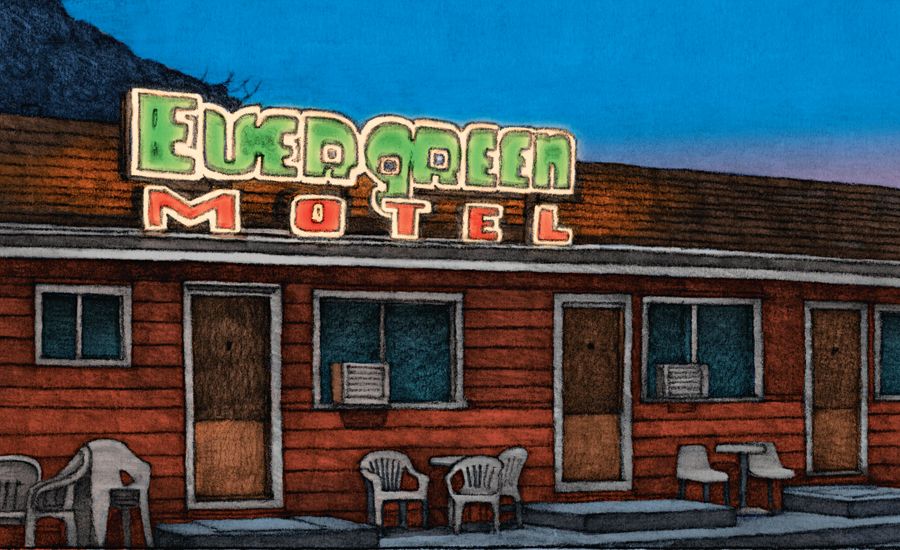Babies don’t follow a nine-to-five schedule, so how could obstetricians? I was asleep when the phone woke me in the early hours of a Sunday morning in December back in the 1980s. “You’re on call,” my wife said, shoving me toward the phone.
I was so sleepy it took a few seconds to understand what the person on the line was telling me. A midwife, at the Evergreen Motel. With her was an Amish couple from a community about three hours away. The woman was in labor.
“I work with Doctor Whitman,” she explained. “I tried to call him, but there was no answer. The service connected me to you.”
Dr. Whitman and I covered each other’s patients whenever needed, but I wasn’t familiar with midwives or the Amish community. “Dr. Whitman’s out of town doing some Christmas shopping,” I said.
“I’m attending a mother in the last stages of labor,” she explained. “Everything was going well, but then I lost the baby’s heart tones. I can’t pick them up with my stethoscope. I need Dr. Whitman’s Doppler to make sure everything’s okay.”
“No heart tones?” I said. Now I was fully awake. The Doppler used echoes to pick up the heart sounds, often finding tones a stethoscope missed. “This is a good time to take the couple to the hospital,” I said. “I’ll meet you there.”
The midwife insisted I come to the motel room. The couple had chosen the place because it was close to the hospital in case of an emergency, but they hoped to avoid it. “I want to honor their wishes,” the midwife said. “If I can just hear the heartbeat, I’d feel better.”
Maybe she would feel better, but I wouldn’t. I drove out to the motel, imagining what I would say to Dr. Whitman when he returned. How could he put me in this position?
The Evergreen was a small ma-and-pa motel tucked behind the Biscuit Café, three blocks from the rural hospital where I worked in Libby, Montana. There was only one car in the lot, though the neon sign read No Vacancy.
I walked up to the room with my Doppler, my breath misting in the air, and knocked.
“Thanks for coming,” the midwife said. “I still haven’t found a heartbeat, but she’s almost fully dilated.”
The motel bedspread was covered with sterile green surgical sheets. On top lay a young woman, her hair in a bun covered by a plain white bonnet. She wore a dark blue linen dress. Her husband had a full beard and clean upper lip.
“I thank thee for coming,” he said, then went back to whispering what seemed like a prayer. He, like the midwife, seemed to have complete faith that they were in good hands.
I tucked in the earpiece of the Doppler. In a few moments I picked up the reassuring squish squish of a normal fetal heartbeat. “The baby sounds fine,” I said, relieved. “You can bring the Doppler back to the hospital after,” I said, handing it to the midwife. I put on my coat and reached for the doorknob.
“Dr. Hufman, wait!” the midwife said. Something wasn’t right.
I put on gloves and checked the birth canal. The baby was midway down. But when I reached out my fingers, instead of feeling the top of a head I felt a nose, mouth and eyes.
“It’s a face presentation,” I said. My voice was calm and steady, but inside I was terrified. In a normal birth, a baby comes out of the womb head first, face turned down, the best position from which to navigate the curved birth canal.
In rare situations—so rare I’d never actually seen one myself—a baby came down with the face pointed forward, unable to negotiate the curve. The results could be serious—even fatal—for mother and child. I pulled the midwife aside.
“We have to get her to the hospital,” I whispered.
“Can’t you turn the head yourself?” she asked.
“With each contraction the head is getting wedged deeper in the canal,” I said. “The neck’s bending unnaturally. A normal birth is practically impossible. She needs an emergency C-section. It’s my call.”
I grabbed the phone, mentally calculating how long it would take the C-section team to get to the hospital with all its modern equipment. All these people had was me. I glanced over my shoulder.
The husband was still calmly praying beside his silent wife. For a second I envied his ignorance about obstetrics. How else to explain his faith?
“Doctor, look!”
The young Amish mother still hadn’t uttered a word, but her jaw was clenched—an unmistakable sign that she was pushing out the baby.
“No, that will only make things worse!” I said helplessly, hanging up the phone and running to her. At the opening of the birth canal a nose and two puffy eyelids appeared. There was no turning back now. “Push!” I said, slipping on a new pair of gloves.
Like an unexpected miracle, the baby’s head popped out, followed by a tiny body. She let out a cry that was music to my ears.
I examined the infant. Her little face was swollen like a pumpkin, but that was expected and would go away in a few days. Other than that she was fine. I placed the baby on her mother’s chest.
“Thank you, Lord!” said the midwife, looking up.
“Lord, we thank thee for our daughter and her safe delivery,” the father said. “And for the help you provided through these people.”
I stumbled out into the parking lot. Morning had broken. The parking lot was covered in a fresh, white, powdery snow.
As I stood there blinking at it, church bells started to ring. I’d forgotten it was Sunday. And who was in charge. Everywhere, at all hours, night and day.
Download your FREE ebook, True Inspirational Stories: 9 Real Life Stories of Hope & Faith.




